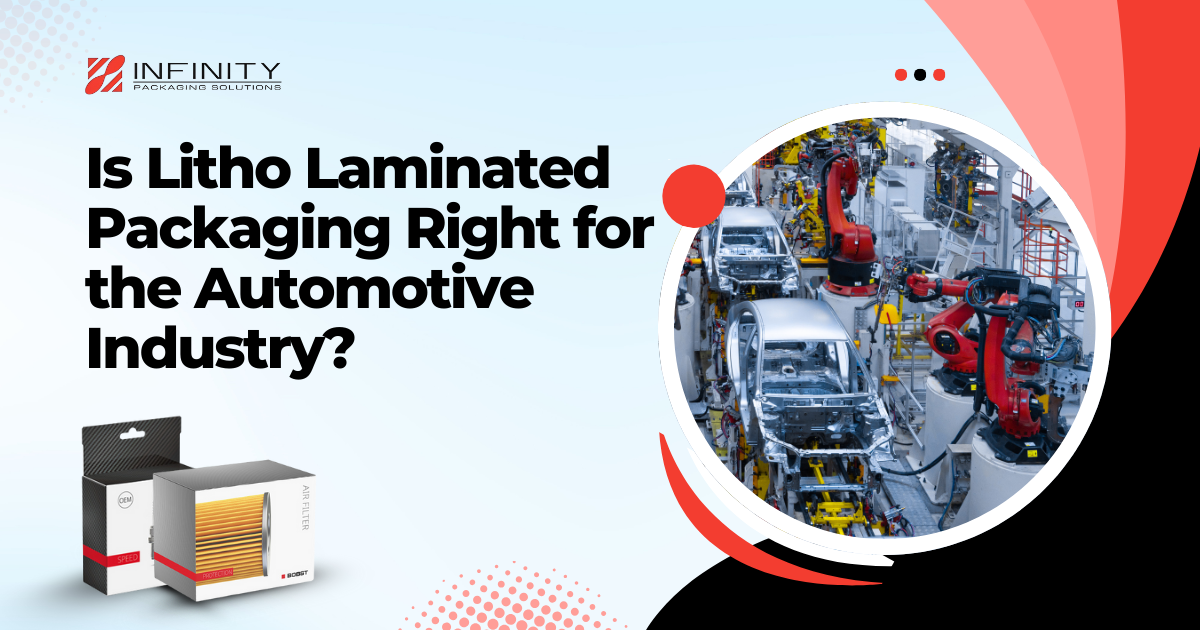
Litho laminated packaging, also known as litho-lamination, involves printing high-quality graphics onto a paper sheet using lithographic (offset) printing and then laminating that sheet onto a corrugated board substrate. This results in packaging that combines vibrant, detailed visuals with the structural strength of corrugated material. It’s commonly used for boxes, displays, and cartons that require both aesthetic appeal and durability. In the context of the automotive industry, which often involves packaging for parts, components, accessories, and tools, the question is whether this solution is suitable. Based on industry insights, litho laminated packaging is indeed right for many applications in the automotive sector, but its appropriateness depends on specific needs like production volume, customization requirements, and product type. Below, explain why it can be a strong fit, how it works in practice, and scenarios where it might not be ideal.
Why Litho Laminated Packaging Is Right for the Automotive Industry
The automotive industry demands packaging that protects valuable, often fragile or heavy components during shipping, storage, and distribution while also supporting branding and marketing efforts. Litho lamination excels here due to its blend of visual quality and robustness, making it suitable for a wide range of automotive products such as spare parts, electronics, tools, and accessories. Here’s why it’s often a good choice:
1. Superior Protection and Durability
- Automotive parts can be sensitive to impacts, vibrations, and environmental factors during transit. Litho laminated packaging uses corrugated board as its base, providing excellent strength and cushioning to prevent damage. For instance, it can handle the rigors of supply chain logistics for items like engine components or delicate sensors, reducing returns and losses.
- How it works: The lamination process bonds a printed top sheet to fluted corrugated layers (e.g., B, E, or F flutes), creating a rigid structure that maintains integrity under weight or stacking. This is particularly useful for automotive OEM (original equipment manufacturer) packaging or aftermarket parts distribution.
2. High-Quality Graphics and Branding
- In automotive retail or B2B settings, packaging often serves as a marketing tool with logos, instructions, or product details. Litho printing delivers sharp, vibrant, photo-like images that enhance brand visibility and consumer appeal.
- How it works: Offset printing allows for precise color reproduction (typically CMYK), and additional finishes like UV coatings, foil stamping, or embossing can be added for a premium look. This is ideal for automotive displays in showrooms or e-commerce packaging where visual impact drives sales.
3. Cost-Effectiveness for High-Volume Production
- The automotive industry frequently involves large-scale manufacturing and distribution, where economies of scale are key. Litho lamination becomes more affordable per unit for runs of 1,000 pieces or more, making it efficient for bulk orders of standardized packaging.
- How it works: Once printing plates are set up, production is fast and consistent, minimizing waste and ensuring timely delivery for automotive supply chains that operate on tight schedules.
4. Versatility and Sustainability
- It can be customized for various part sizes and shapes, from small electronic modules to larger assemblies, and supports eco-friendly materials like recyclable paper and water-based inks. This aligns with the automotive sector’s growing focus on sustainability, such as reducing plastic use in packaging.
- How it works: Manufacturers can select flute profiles and board weights to match the protection needs of specific automotive items, while incorporating features like tear tapes or windows for functionality.
Overall, litho lamination is versatile enough to serve industries like automotive, where it provides a balance of protection, aesthetics, and efficiency. Litho laminated packaging is a strong, visually appealing option for the automotive industry when high-volume, branded, and protective solutions are needed, as evidenced by its adoption across similar sectors.


